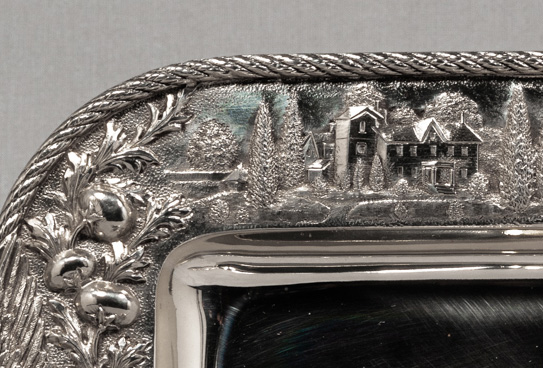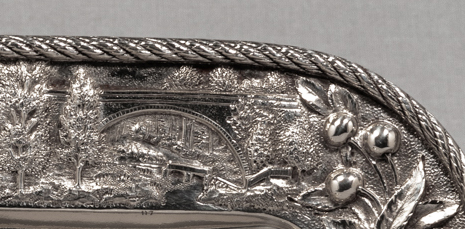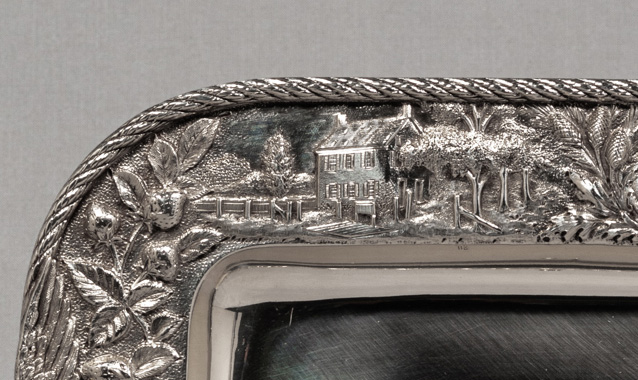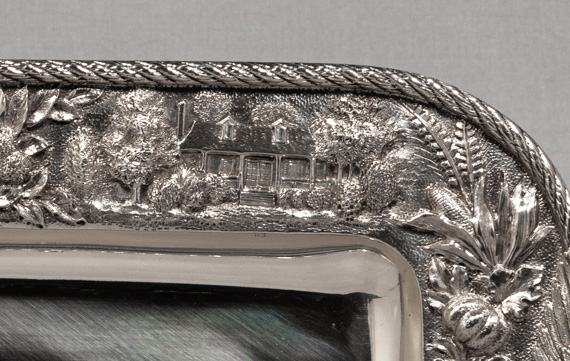Ice Cream Platter & Serving Knife, Montgomery County
From the USS Maryland Silver Service

Objects: Ice Cream Platter and Serving Knife, Montgomery County
Date: 1906
Medium: Sterling Silver
Dimensions: Platter: Overall height, 1 1/8", Overall width, 15 1/2", Overall depth: 9”
Dimensions: Knife: Overall length, 11 1/8"; Overall width, 3 1/2"
Accession number(s): MSA SC 1545-0918-1 and MSA SC 1545-0918-2
This ice cream platter represents Montgomery County, which was created by the Maryland Constitution of 1776 and named for General Richard Montgomery who was killed in the invasion of Quebec in 1775. The right side of the platter is decorated with cherries and strawberries, while the left side is decorated with wheat sprays, pumpkins, beets and eggplant. Sprays of oak, chestnut and hemlock surround the Great Seal and the Cruiser.
The handle of the knife is formed from a reproduction of a “crownstone” marker of the Mason-Dixon Line. These large limestone markers were placed every five miles along the Mason-Dixon Line and were decorated with the coats-of-arms of Maryland and Pennsylvania.
1. Greenwood (number 119)

3. Cabin John Bridge (number 117)

Scenes across the bottom (right to left)
1. Brookeville Academy (number 118)

2. USS Maryland Cruiser
3. “Clean Drinking” Manor (number 120)

|
This web site is presented for reference purposes under the doctrine of fair use. When this material is used, in whole or in part, proper citation and credit must be attributed to the Maryland State Archives. PLEASE NOTE: The site may contain material from other sources which may be under copyright. Rights assessment, and full originating source citation, is the responsibility of the user. |
© Copyright August 07, 2024 Maryland State Archives
